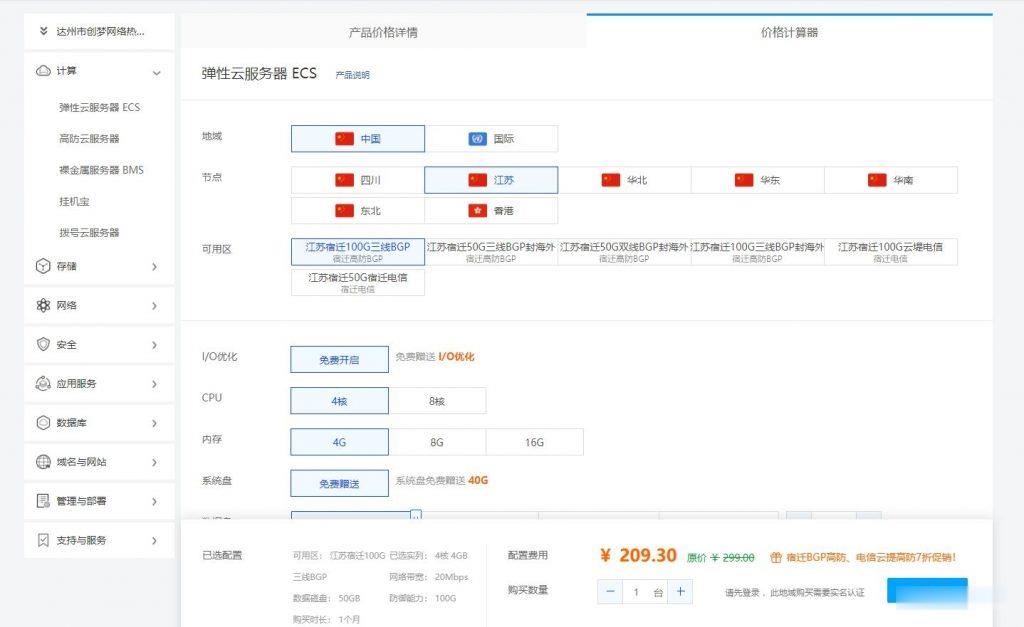demonstrateGrowing Trends article - NYSTA Web Site
“Heavy Repetitive Fall Overseeding To Improve
Low-Input Sports Fields”
A Report To The New York State Turfgrass Association
Principle Investigator:David Chinery,Cornell Cooperative Extension o f Rensselaer County,61State St.,Troy,NY 12180
Cooperators: Dr.Frank Ross i,Corne ll Univers ity, Ithac a,NY
Dennis Weatherwax,The Averill Park School District,Averill Park,NY
Jim Conroy,The C ity O f Troy,Troy,NY
Introduction: Overseeding,or distributing seed over an existing turfgrass area to increasedensity, is a traditional practice followed by many turfgrass managers.Unfortunately, success inoverseeding is not easily accomplished. To improve the chances that a high rate of seedgermination and establishment will occur, it is often recommended that some sort of cultivationis done before seeding. Types of cultivation include removing cores of soil (core cultivation),spiking,and vertical mowing.An aggressive overseeding program for a sports field might be tooverseed four or five times per year,hoping each time for some limited success.Home lawnsand commercial properties,which are not usually overseeded,might be overseeded once or twiceper year in a“best case”scenario.With limitations on the use ofpesticides increasing,overseeding might seem to be a better option than ever.However, turfgrass managers oftenreport disappointing results with overseeding(1). This is especially true on low-input fields,orfields where fertilizer, irrigation,weed management,and other cultural activitie s are limited ornonexistent. The cultivation requirement attached to overseeding can be disruptive to the use ofthe turf area in question,as well as adding costs. Clearly,easier and more effective ways tooverseed turfgrass areas are ne eded.
In August o f 2003 a re search project examining heavy,repetitive overseeding wasconducted on a two sports fields in the Capital District. This study was designed to put intopractice the ideas of Dr.Frank Ro ssi,Extension Turfgrass Specialist at Cornell University(2).Dr.Rossi has demonstrated that dramatic increases in turfgrass density were possible when highrates o f perennial ryegrass (Lolium perenne)were overseeded weekly on a simulated sports field.Objective: To demonstrate the practice o f heavy, repetitive overseeding on two low-inputCapital District sports fields using three seeding rates.
Procedures:Anyone who has visited practice soccer and football fields at high schools and parkswould probably agree that many are examples of ugly,beat-up turf and weeds. Two fields wereused in this study. The practice football field at Averill Park High School had compacted clayloam soil,a low pH(5.9),and was composed of bare spots,crabgrass,knotweed,plantain,dandelion,perennial ryegrass and Kentucky bluegrass. The second field was a multi-purposesoccer/football field in an inner city park,Prospect Park, in Troy. The soil was a loam with pH
7.5. The predominate species here were purslane,Kentucky bluegrass,perennial ryegras s,andgoosegrass. See Table 1 for a description of the initial composition of each field.
Four treatments were made: no seed(check plots),and overseeding at rates of2,6 and10 pounds of seed per 1,000 square feet (M),with three replications made of each treatment ateach site.Overseeding started on August 14 and continued weekly(except for the week of 9/18)until October 16,for a total of 10 applications in 11 weeks. Seed was distributed evenly acrossthe plots using a Gandy drop spreader. There was no cultivation done on the sites (other thanthat done by the football/soccer players or other field users); the seed was simply spread on theplots.No irrigation was supplied,as rainfall was abundant. Traffic and wear on the Averill Parkfield was concentrated in the center,and as a consequence one set of plots received light traffic,one medium,and one heavy.All ofthe plots at the Prospect Park field seemed to received equaltra ffic.
Results:Results for Averill Park field are outlined in Table 2. Turfgrass density increased foralltreatments,even for the check plots that did not receive overseeding. Small amounts ofturfgrass already existed in these plots,and when competition from the weeds was removed afterthey died from frost and cooler temperatures, the density of the grasses increased. This samephenomenon is also partly responsible for the increase in density of the overseeded plots as well,except for the three treatments that started with no turfgrass, in which case the increase in densitycan be attributed to overseeding alone. “Net increase in turfgrass density”was calculated as thedensity estimated at Week 11 minus the initial density. It is an attempt to measure the densityincrease caused by overseeding and to remove the influence ofa plot having some turfgrass atthe beginning ofthe study. The largest net increase in turfgrass density was seen in the 6 lbs./Mlight traffic plot,where density increased from 0%turfgrass at Week 0 to 100%at Week 11.The largest increase in net density for heavy traffic plots was also seen in the 6lbs./M plots,where density increased from 0 to 78.1%. Plots overseeded with 10 lbs./M had higher netincreases in density at Week 5,but the 6 lbs./M plots had greater net increase in density by Week11 of the study. For a visualcomparison, see Photo 1.
Table 2:Average percent turfgrass for eight treatments over ten seedings at Averill Park HighSchool
Photo 1 : From left to right: 2 lb./M,6 lb./M and 10 lb./M seeding rates in a heavily traffickedportion of the practice field at Averill Park High School
Very different results were obtained at Propect Park(Table 3). In the first few weeks ofthe study,perennial ryegrass seedlings were observed to be germinating in many ofthe plots.After Week 5,all of the plots, except the untreated checks,had a net increase in turfgrass density.The largest increase of50.9%was seen in the 10 lbs./M plots.After the week 5 observations,however, the 2 lbs./M plots continued to show an increase in turfgrass density,while the 6 lbs./Mand 10 lbs./M showed decreases. This was largely due to factors on the site. The middle of thisfield is very compacted and slightly depressed.Given the large amount ofrainfall during thetime period this study was conducted, this depressed area flooded repeatedly. Seed from treatedplots was observed to have washed away and moved onto untreated strips between the plots.Seedlings may have also been uprooted or died from flooding.While a net increase in turfgrassdensity was still achieved for all seeded treatments, these confounding factors decreased thepossible gains which could have been made. These results clearly indicate that the topography ofthe field will influence the success ofoverseeding.
Photo 2: The sports field at Prospect Park,with the worn,depressed area evident in the middleof the field
Conclusions: These results indicate that heavy,repetitive overseeding using perennial ryegrasscan improve turfgrass density on low-input sports fields.Greater increases were seen in plotsreceiving light traffic versus heavy traffic,yet even in plots with heavy traffic, significantincreases were still seen. The least successful situation seen in this study was on the ProspectPark field,where the uneven topography combined with heavy rainfall caused seed to wash out
of treated plots and seedlings to die.An even(or at least not severely rutted)field surface istherefore important to overseeding success.Overseeding at the 6 lbs./M rate gave the greatestincrease in net density and is also a less expensive alternative to the 10 lbs./M rate.
Is heavy,repetitive overseeding a cost-feasible proposition for sports fields?An internetsearch shows that perennial ryegrass seed prices range from$1.40 per pound to$2.80 per pound;wholesale prices and bulk quantities canpushthe low end price to less than$1.00 per pound.Given a$1.00 to$2.80 price range, the cost for a 10 week overseeding program at a 6 lb./M ratewould be$60.00 to$168.00 for one thousand square feet. If a school wanted to overseed themiddle of a worn football field(approximately 18,000 square feet), the cost would be in therange of$1,080.00 to$3,024.00.While this may not be an insignificant cost to financially-troubled school districts, it seems far less expensive than most pesticide treatments,or a lawsuitbrought about from a student athlete’s injuries suffered due to a poorly-maintained sports field.Since cultivation is not necessary with heavy,repetitive overseeding, further expenses areavoided,and fields can remain in play as the overseeding is taking place. The effect ofprovidinghigh-phosphorous fertilizer with overseeding should be studied, since such starter-fertilizer canincrease seeding success and is fairly affordable.
A project examining how this system performs in spring conditions on home lawns isplanned for 2004. If you have any questions or experiences with overseeding to share,pleaseemail me at dhc3@cornell.edu or call (518)272-4210.
Resources cited:
1. “High School Sports Fields: The Last Frontier Of Turfgrass Management,”Ed Leonardand David Chinery,New York State Turfgrass Association,2003.
2. “Aggressive Sports TurfOverseeding,”Dr.Frank Rossi, in“Cornell Field Day’03
Program Booklet,”Corne ll Univers ity,2003
Thanks to The New York State Turfgrass Associationforprovidingfundingfor this study, to Dr.Frank Rossi of Cornell Universityfor technical support,and to Dennis Weatherwax of theAverill Park School District andJim Conroyfrom the City of Troyfor research sites.
- demonstrateGrowing Trends article - NYSTA Web Site相关文档
- periodPERIODIC TABLE TRENDS - SCHOOLinSITES Web hosting …元素周期表的趋势schoolinsites网页寄存…
- PCTechnological Trends of Distance Learning From Web-Based to WAP-Based
- 网页Mobile Web Design Trends and Best Practices
- higherPeriodic Trends Worksheet - Faculty Access for the Web
- WebWandererHow Is My Web Community Developing Monitoring Trends In Web…
- specificInventory- likely to be underestimated three interesting web design trends
创梦网络-江苏宿迁BGP云服务器100G高防资源,全程ceph集群存储,安全可靠,数据有保证,防护真实,现在购买7折促销,续费同价!
官方网站:点击访问创梦网络宿迁BGP高防活动方案:机房CPU内存硬盘带宽IP防护流量原价活动价开通方式宿迁BGP4vCPU4G40G+50G20Mbps1个100G不限流量299元/月 209.3元/月点击自助购买成都电信优化线路8vCPU8G40G+50G20Mbps1个100G不限流量399元/月 279.3元/月点击自助购买成都电信优化线路8vCPU16G40G+50G2...

GreenCloudVPS$20/年多国机房可选,1核@Ryzen 3950x/1GB内存/30GB NVMe/10Gbps端口月流量2TB
GreencloudVPS此次在四个机房都上线10Gbps大带宽VPS,并且全部采用AMD处理器,其中美国芝加哥机房采用Ryzen 3950x处理器,新加坡、荷兰阿姆斯特丹、美国杰克逊维尔机房采用Ryzen 3960x处理器,全部都是RAID-1 NVMe硬盘、DDR4 2666Mhz内存,GreenCloudVPS本次促销的便宜VPS最低仅需20美元/年,支持支付宝、银联和paypal。Gree...

触摸云 26元/月 ,美国200G高防云服务器
触摸云触摸云(cmzi.com),国人商家,有IDC/ISP正规资质,主营香港线路VPS、物理机等产品。本次为大家带上的是美国高防2区的套餐。去程普通线路,回程cn2 gia,均衡防御速度与防御,防御值为200G,无视UDP攻击,可选择性是否开启CC防御策略,超过峰值黑洞1-2小时。最低套餐20M起,多数套餐为50M,适合有防御型建站需求使用。美国高防2区 弹性云[大宽带]· 配置:1-16核· ...

-
软银巨亏除了IPO,私募股权投资还有哪些退出方式天气预报哪个好用哪个最准确分小时的那种天气预报app,哪个准确方便使用985和211哪个好高校是985一般专业还是211好专业?帕萨特和迈腾哪个好2019帕萨特和迈腾哪个好?隔音怎么样?手机杀毒软件哪个好安卓手机杀毒软件哪个最好网校哪个好会计网校哪个好海克斯皮肤哪个好LOL用100块是抽海克斯好还是抽蛮王的生化领主的活动还是直接买皮肤好dnf魔枪士转职哪个好dnf魔枪士转职哪个职业好?播放器哪个好什么播放器好用行车记录仪哪个好行车记录仪什么牌子好